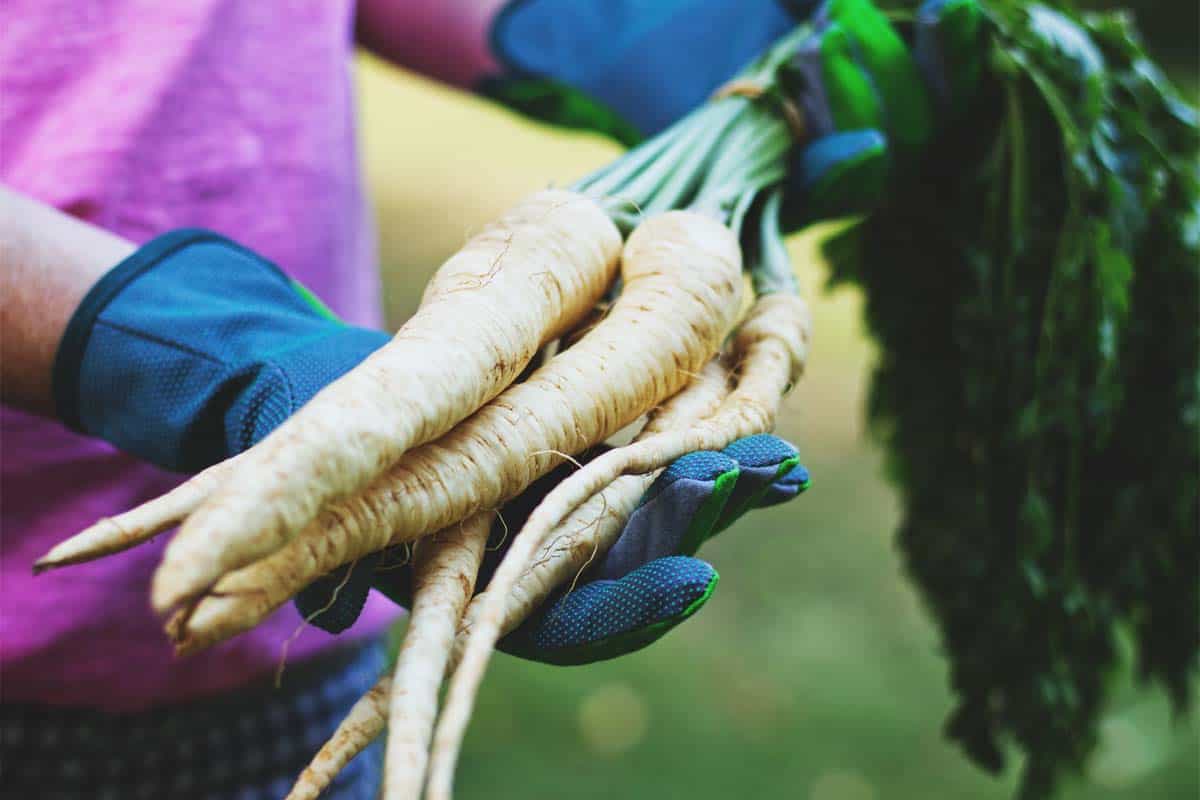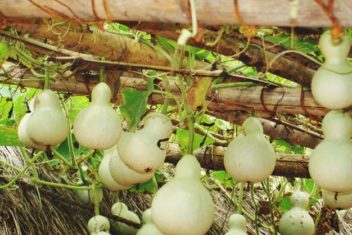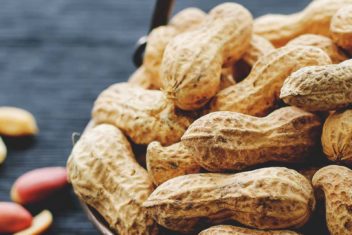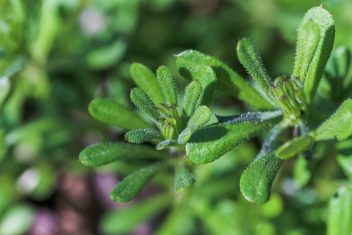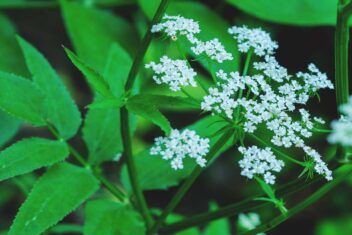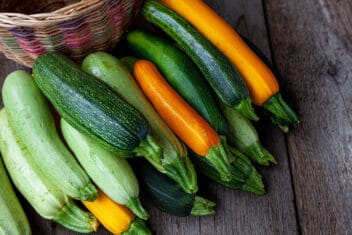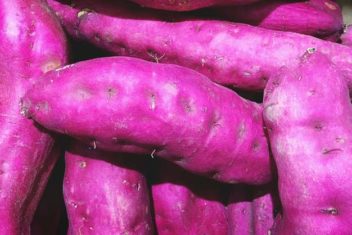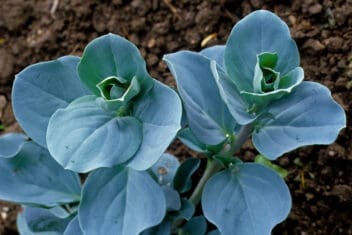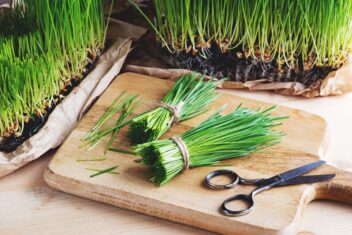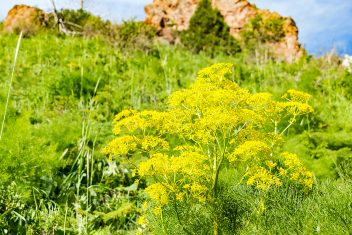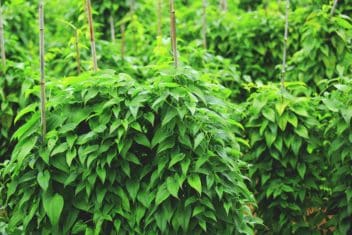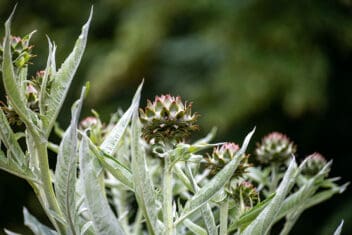It’s odd to me that parsnips are so underrated. I hardly ever see them sold the grocery store. If they’re in the produce aisle, they’re somewhere hidden. The carrots? The golden child of the vegetable world is obviously front and center. Parsnips, however, are relegated to the back shelves and unassuming produce bin corners.
What’s the deal? How have we not figured out that they’re just as great as the sexy carrot? They taste just as good raw, roasted, and puréed as their carroty brethren, and they contain more vitamins and minerals.
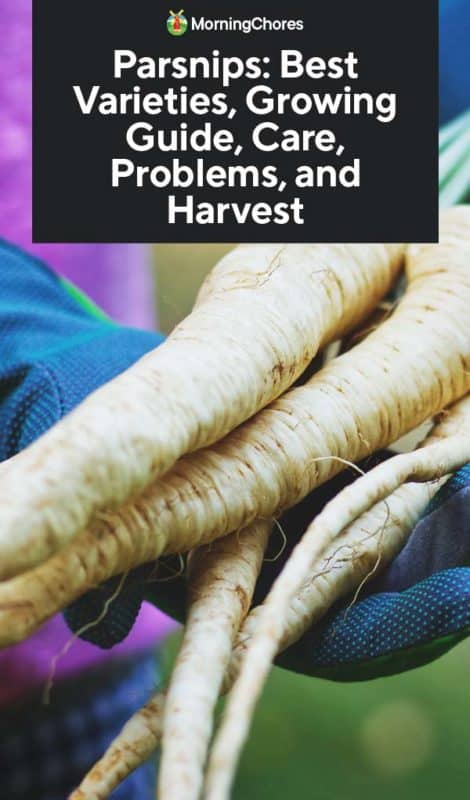
Parsnip Varieties
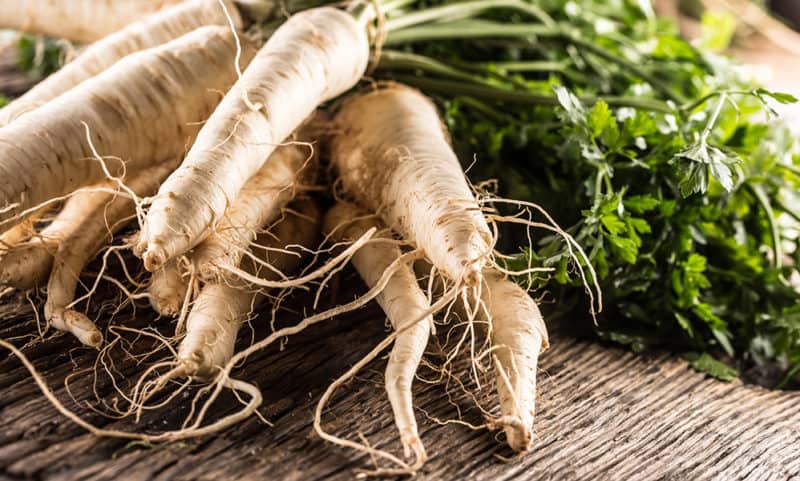
The myriad of carrot varieties are widely known by gardeners, but parsnips have their fair share of different varietals, too:
- All American: a faster-maturing variety that matures in just 95 days. It’s resistant to many diseases, also.
- Hollow Crown: an heirloom parsnip with long roots. Slow to germinate.
- Harris Model: produces 12-inch long roots. One of the more common varieties.
- Turga: Matures in about 110 days. Produces roots that are quite wide at the top. Uniform appearance.
- Albion: White roots that are big and chunky. Matures in about 120 days.
- Javelin: Ideal for spring harvests. Similar in appearance to Albion variety, but it’s a little narrower.
- White Spear: White roots like Albion. White top portion with a tapered bottom half.
- Halblange:Produces uniform roots with a wedge-shape that grows up to 10-inches long.
- Lancer: Matures in 120 days and produces long roots with cream-colored flesh. Disease resistant.
Planting Parsnips
The biennial carrot-like root vegetables are biennials, though they’re typically grown as annuals.
Growing Zones
Grow parsnips in zones 2-9.
Sun Requirements
Parsnips should be grown in full sun to partial shade.
Soil Requirements
Parsnips need sandy, loamy soil with a pH between 5.8 and 7.5. Soil should be fertile and well-draining.
When to Plant
Parsnips are slow to germinate and require a longer growing season than carrots. Timing is crucial if you want to succeed when growing this vegetable.
As soon as snow and ice have melted and the soil is no longer frozen, get outside and sow parsnip seeds directly, typically 3-5 weeks before the last frost date in your area.
Planting Seeds
Add compost to enrich the planting area and plop seeds about an inch apart at about 1/2-inch deep. It’ll take time for germination to occur. Be patient, it may take up to 3 weeks.
Use fresh seed to ensure decent germination rates. Parsnip seeds are notoriously finicky and tough to germinate.
Spacing
Once they’ve sprouted and grown a bit, thin out the seedlings so that they’re no less than 3-inches apart with 24 inches between rows.
Transplanting
Like carrots, parsnip doesn’t enjoy being transplanted.
Caring for Parsnips
Careful when handling parsnip plants. The foliage contains furanocoumarin, which can irritate and burn exposed skin.
Watering
Give about an inch of water per week during the summer. You can apply organic mulch to the area to help preserve water.
Weeding
Remove weeds as soon as they appear. As with carrots, weeds may interfere with root growth.
Fertilizing
Fertilize consistently ever month to support growth throughout the season.
Succession Sowing
Parsnips are slow growers, so succession sowing is a bit tricky. Stagger plantings, but be aware that the space they take up will be taken up for a while.
Problems and Solutions to Growing Parsnip
Parsnips experience similar problems as carrots. Healthy soil and healthy plants are the keys to preventing pest infestations. Here are a few problems, pests, and diseases that may occur:
Aphids
The bane of gardeners everywhere, aphids like parsnip leaves just as much as they like everything else. Use an insecticidal soap to kill off aphids when you spot them on your plants. Visit our guide for more tips.
Carrot Rust Flies
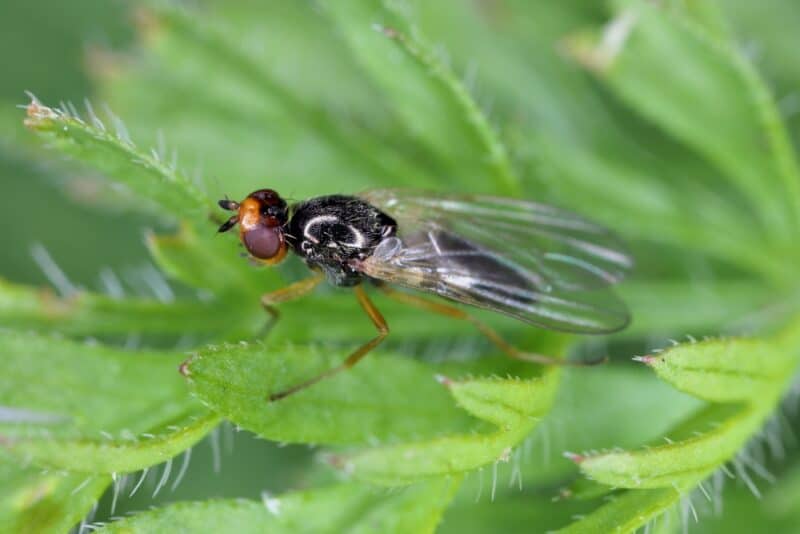
Parsnips aren’t carrots, but carrot flies (Chamaepsila rosae) don’t care. Their larvae will feed on the roots of both carrots and parsnips.
The best way to deal with carrot flies is to deter them from the start. Try planting your parsnips near chives or other alliums, which might help a little. There aren’t any studies that prove this works, but it doesn’t hurt to try, right?
A three-foot mesh fence, floating row covers, or growing in tall raised beds can help, since the flies can’t fly very high.
While row covers are the best way to prevent rust flies from attacking your parsnip crop, crop rotation is also important.
Avoid planting parsnips in the same place where you were planting carrots or related vegetables in years prior. Grow marigolds alongside your parsnips to help deter the fly.
Leaf Miners
Leaf miners chew tunnels through the leaves of plants and can stunt or kill them. If you only have a few infested leaves, squeeze them along the tunnels to crush the pests. It also helps to keep your plant healthy so that it can withstand the effects of the bugs better.
If you have a bigger infestation, you can use floating row covers, encourage parasitic wasps, and install blue and yellow sticky traps.
Parsnip Canker
Parsnip canker is a fungus that attacks parsnip plants. If you keep carrot rust fly away, make sure your garden is weed-free, and avoid overwatering, you can avoid this problem.
Cutworms
Cutworms nibble at the base of plants, killing them. Our guide will help you get this pest under control.
Misshapen, Green or Cracked Roots
If you have misshapen roots, the wrong soil type is likely the culprit. If your soil is thin, you’ll probably end up with irregular roots. Substantial, fertile soil is ideal for growing parsnips.
If the top portion of your parsnips is greenish, it’s because they were exposed to the sun while growing. The green part shouldn’t be eaten. To prevent this, make sure the shoulders of parsnips are always covered by soil. Use mulch if the earth continues to blow away and leave the parsnip tops uncovered.
Cracked roots are a sure sign of uneven watering. Prevent cracks by ensuring your parsnips gets an adequate, regular supply of water.
If your parsnip roots are riddled with tiny hairs: Some hairs are normal, but too many are a sign of an overabundance of nitrogen.
Germination and Seedling Problems
If your seeds aren’t germinating, you’re not giving them enough time to do their thing, or your seeds are no longer viable. Parsnip seeds aren’t viable when kept for long.
If germination is poor, and seedlings aren’t vigorous, it could be that you sowed your seeds too shallow. Be sure to sow at least 1-inch deep and avoid surface sowing.
Bad Flavor
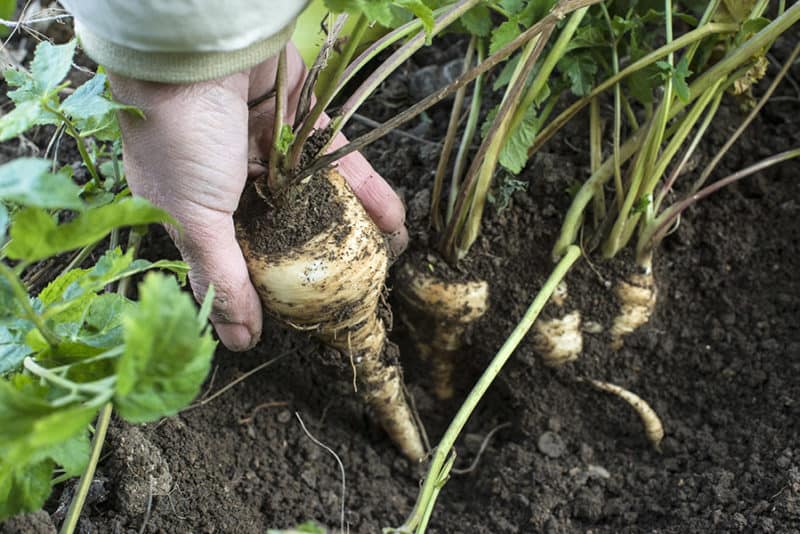
If your parsnips taste bland and boring, it’s not Mother Nature’s fault. Keep the roots in the ground until a frost to help sweeten your crop.
Parsnips Flowering in Their First Year
If exposed to freezing temperatures early on in the season, the plants think they’ve already gone through one season and winter, so they begin to flower and set seed. To prevent this from occurring again, use row covers or other protective measures when sowing early in the season.
Companion Planting with Parsnip
Here are the best plants to plant alongside parsnip:
- Lettuce
- Sage
- Rosemary
- Peas
- Beans
- Peppers
- Garlic
- Radish
- Potato
If left in the garden to go to seed the following year, the flowers of the parsnip plant attract beneficial and predatory insects that help control pest infestations in your garden.
Don’t plant parsnips in the same place as or right next to:
- Carrots
- Fennel
- Dill
- Parsley
- Celery
- Cabbage
- Tomato
- Spinach
Harvesting Parsnip
It takes about 16 weeks for parsnips to mature and grow large enough for harvest to be worthwhile. Exposure to frost is recommended to ensure the sweetest, tastiest root. Wait until frost before pulling your crop. Left in the ground, they’ll keep, but you won’t be able to pick them after a hard frost has frozen the ground.
Keep in mind that parsnip leaves can be irritating and cause blisters if they touch bare skin.
Store parsnips as you would carrots. Pack them in dry sand in a cool, dark place.
If you’d like to save parsnip seeds, you’ll need to wait until its second year since it’s a biennial and won’t set seed until then.
Cooking With Parsnip
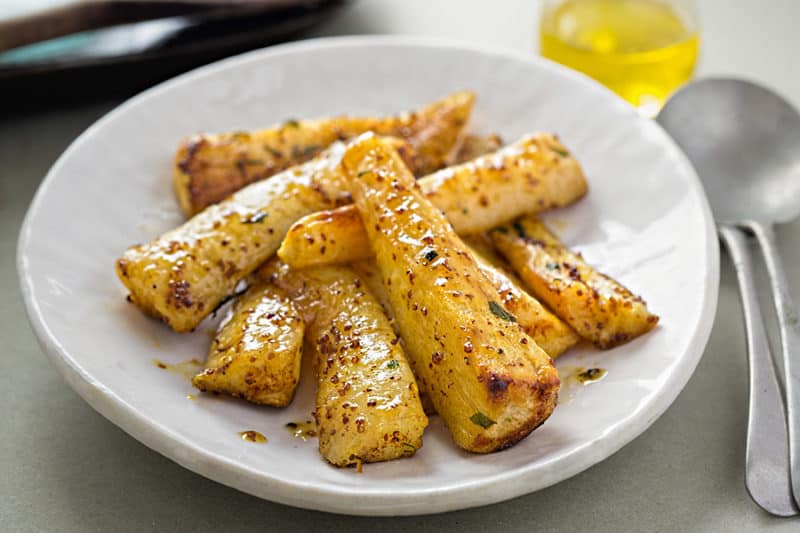
The other day in an online cookbook club I’m part of, someone repeatedly called a parsnip a turnip. It was an honest mistake, and a few of us lol’d about it – original poster included.
I mentioned how I was confused by the mix-up and wanted to set the record straight because I’m not a big fan of turnips, but I do love parsnips. The carrot-cousin is far superior to the cabbage-family root vegetable. Though, I’ll admit that I believe the rutabaga is the true overall winner.
Use them in soups and stews. Roast them like you would carrots or mash them up. Anywhere you might use carrots, parsnip is a viable substitute.
Health Benefits of Eating Parsnip
Tasty parsnips are chock full of fiber, antioxidants, vitamin C, and vitamin K. The fiber-filled veggie helps with digestion, and studies show that it helps control blood sugar, too. The high amount of vitamin C also helps with immune function.
Did you know that parsnips are actually nutritionally superior to carrots? Another great reason to consider them in your springtime garden plans.
